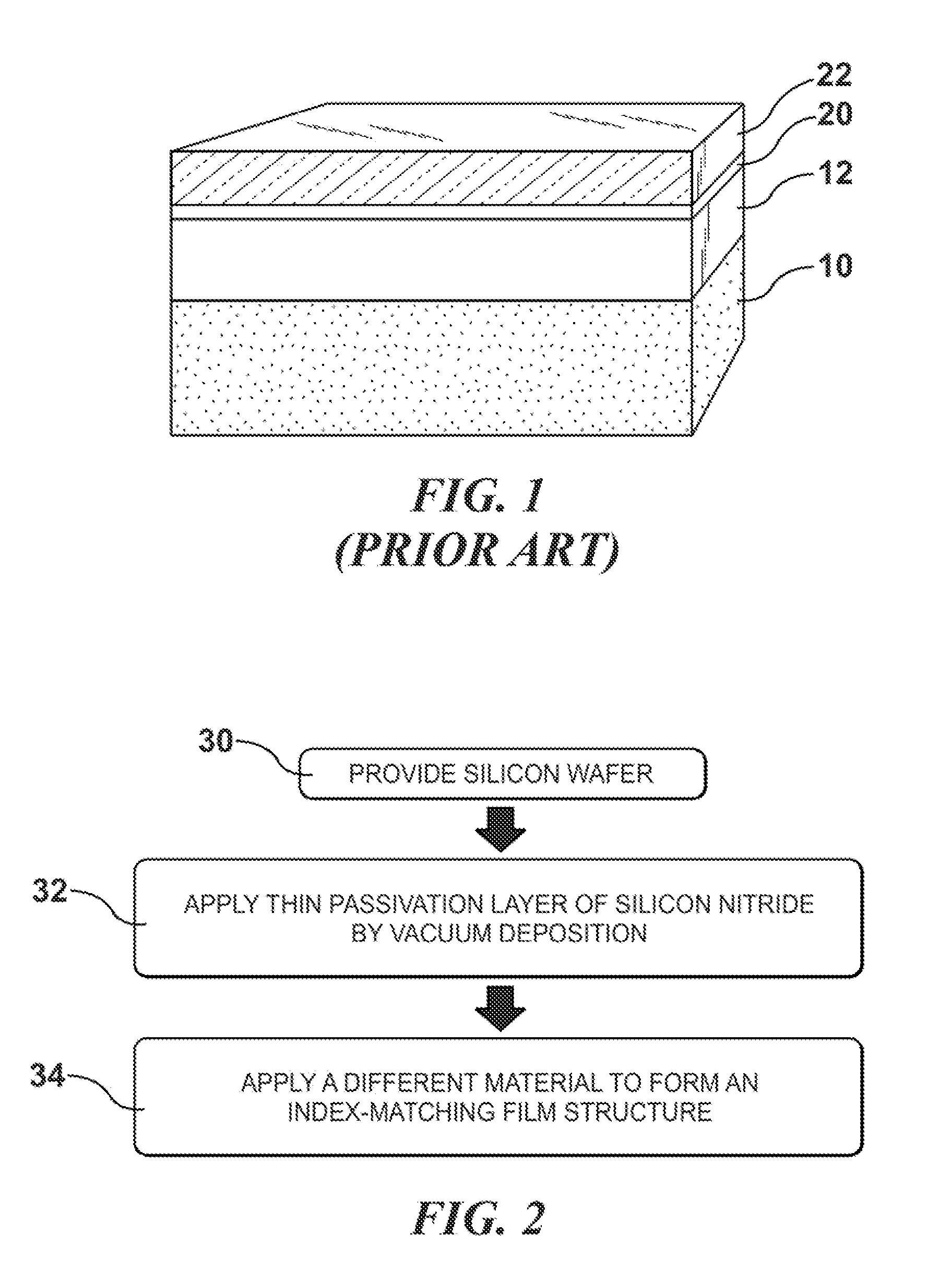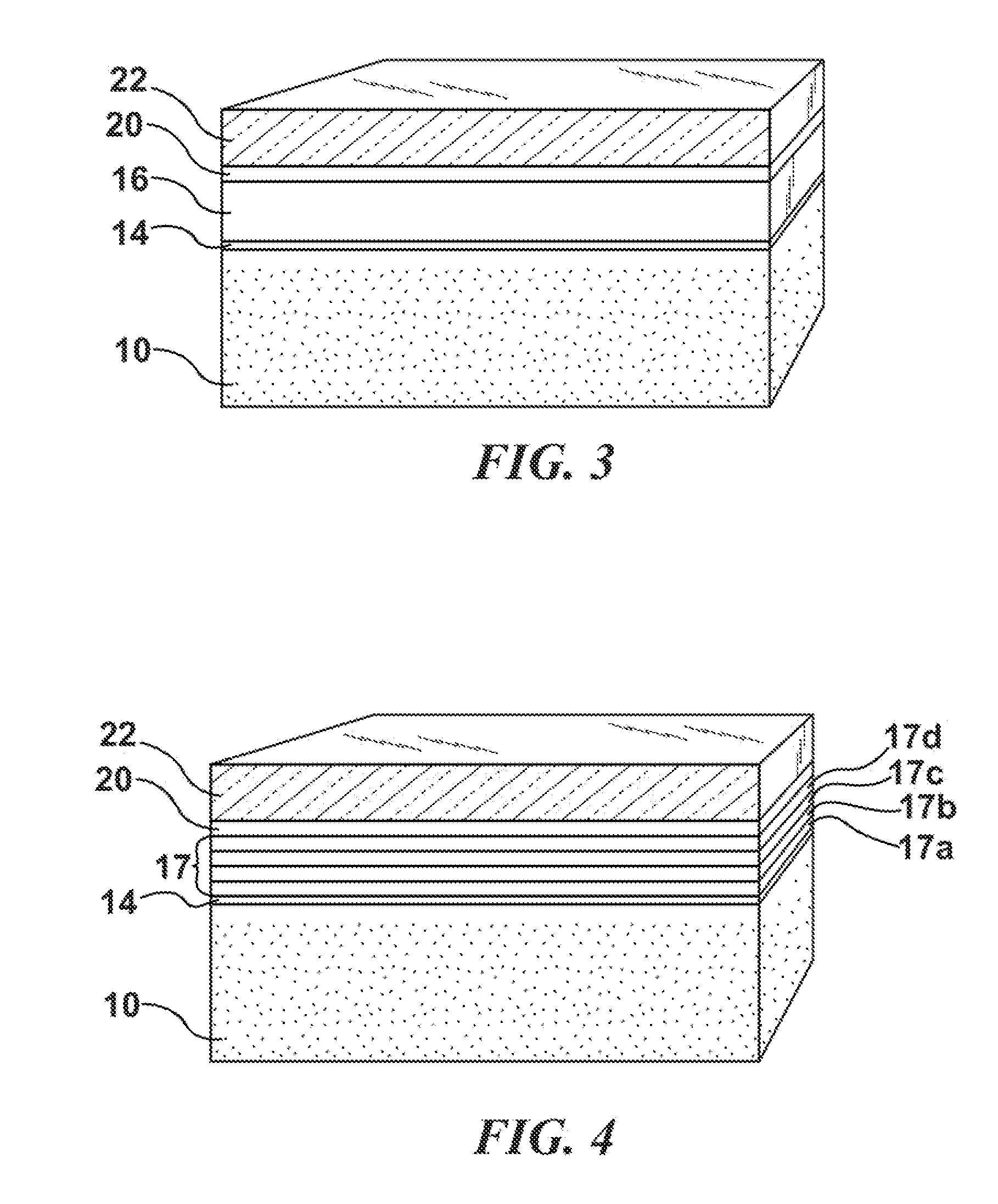Method of Passivating and Reducing Reflectance of a Photovoltaic Cell
a photovoltaic cell and passivating technology, applied in the direction of semiconductor/solid-state device manufacturing, electrical apparatus, semiconductor devices, etc., can solve the problems of high cost of implementation of vacuum deposition techniques, thin silicon nitride layer also reduces the reflectance of the pv cell, and achieves excellent passivation properties of silicon nitride, reduce the cost of manufacturing silicon pv cells, and reduce the effect of the cos
- Summary
- Abstract
- Description
- Claims
- Application Information
AI Technical Summary
Benefits of technology
Problems solved by technology
Method used
Image
Examples
Embodiment Construction
[0016]FIG. 1 shows a portion of a prior art silicon photovoltaic (“PV”) cell which is currently in widespread use. For clarity of explanation, the electrodes and p+or n−type doped regions are not shown. The PV cell includes a silicon semiconductor wafer 10, onto which various coatings or layers are applied. In a standard and widespread manufacturing technique, a single layer of silicon nitride 12 is applied onto a major (upper-shown) surface of wafer 10 for receiving photons. A standard technique for applying the silicon nitride layer 12 is by vacuum deposition, to a typical thickness of 1000 Angstrom. Thicknesses of layers as mentioned herein are average thicknesses, unless otherwise stated. Silicon nitride layer 12 functions to both passivate the surface of the silicon semiconductor wafer 10 that it overlies, as well as to reduce the reflectivity of the PV cell. Thus, in the prior art, the typically 1000-Angstrom thick silicon nitride layer 12 acts both as a passivation layer and ...
PUM
| Property | Measurement | Unit |
|---|---|---|
| thickness | aaaaa | aaaaa |
| thickness | aaaaa | aaaaa |
| thicknesses | aaaaa | aaaaa |
Abstract
Description
Claims
Application Information
 Login to View More
Login to View More - R&D
- Intellectual Property
- Life Sciences
- Materials
- Tech Scout
- Unparalleled Data Quality
- Higher Quality Content
- 60% Fewer Hallucinations
Browse by: Latest US Patents, China's latest patents, Technical Efficacy Thesaurus, Application Domain, Technology Topic, Popular Technical Reports.
© 2025 PatSnap. All rights reserved.Legal|Privacy policy|Modern Slavery Act Transparency Statement|Sitemap|About US| Contact US: help@patsnap.com



